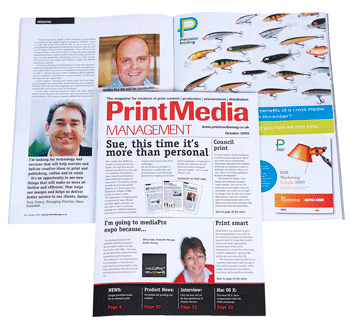Written by Howard Fenton
Senior Technology Consultant
NAPL
 The Atlantic, the 157-year-old magazine, got into hot water recently when they placed a online story about the Church of Scientology on the publication’s website. The article on the controversial church talked in very positive terms about the successes of the past year in their efforts to expand.
The Atlantic, the 157-year-old magazine, got into hot water recently when they placed a online story about the Church of Scientology on the publication’s website. The article on the controversial church talked in very positive terms about the successes of the past year in their efforts to expand.
Although the story was marked with a yellow banner that identified it as sponsored content, it could easily appear at first glance as any other article on Atlantic’s site. The article is the latest example of a concept called Native advertising, which many consider a disruptive technology that allows content written by advertisers to be displayed like the articles written by the staff. This crosses the traditional “church versus state” model used in journalism to separate advertising content from editorial content.
The story went viral on Twitter resulting in criticisms over both the church and the publisher the Atlantic’s use of Native advertising. As a result the Atlantic removed the article and replaced it with a notice saying that the company had, “temporarily suspended this advertising campaign pending a review of our policies that govern sponsor content and subsequent comment threads.”
In a statement, the Atlantic acknowledged it “screwed up”. But that does not change the fact that publishers are desperate for new revenue opportunities and Native advertising is one many are considering. What do you think?
- As a reader, are you happy, unhappy, or neutral when you think about advertisers writing stories in your newspaper or magazine that appear to be written by the editorial staff?
- What if the publication said that because of declining ads it had to utilize Native advertising to stay in business?
_____
Howard Fenton is a consultant and business advisor at NAPL. Howie advises commercial printers and in-plants on benchmarking performance against industry leaders, increasing productivity through workflow management, adding and integrating new digital services, and adding value through customer research. He is a paid contributor to this blog.



If it is clearly marked as paid content, and the magazine, newspaper, or other content delivery organizations are still providing otherwise interesting reading material, then I’m okay with Native Advertising.
All that said, I suspect some of the problem with the Scientology example is that it was pro-Scientology, and Scientology has managed to alienate a lot of the internet for what I feel are good reasons. So the journalists and the editorial staff should be careful when selecting who is providing this native advertising. If it’s on topic for the publication, and well written, I doubt many readers will find it obtrusive.
Amy,
Thanks for your feedback and I agree that having paid content, clearly marked, is essential if it’s going to be acceptable form of advertising within traditional publications.
I can remember clearly the 1st time I realized how important marketing and sales materials was in the printing marketplace. During the 2005 Innovate Road tour there was a slide that we used often from the Accenture Content Marketplace study that showed that the largest category of printed materials supported a marketing and sales role. The study showed that $670 billion out of the total $930 billion or 72% of all printed materials supported marketing and sales role.
Of course, there are many things cannibalizing the amount of money spent on sales and marketing materials including search engine optimization, social media and of course this Native Advertising. That’s why one of the solutions we often recommended to companies experiencing declines in traditional products and services is to create new products and services with greater value such as large-format, mailing and fulfillment, as well as database and marketing services.
Howie
Too many advertisers try to fool people into reading their pitch. It used to be that ad copy had to have a different look and feel — different fonts, layouts, graphics — instead of just a sneaky little six point grey “ADVERTISEMENT” label. Now we get custom publishing that tries to slip through our cognitive defenses, personalized with variable data that’ll ring our bell.
It’s worse on the web where same-font text ads are interspersed with editorial paragraphs. After decades of browsing, evolution has blessed us with banner blindness. We don’t really see web display ads anymore, but the text ads are just confusing enough to break through.
Is the future of advertising a psychological arms race of ever more innovative ways of compelling attention and ever hardening reactions to marketers’ messages?
Jack,
It’s funny to think about the psychological arms race as you call it in which advertisers are vying for our attention. Often times it seems like science fiction writers get it right before anyone else does. There was a very interesting future painted in the Tom Cruise movie “Minority Report” where cameras were constantly scanning everyone’s retinas as they walk around and then generating customized ads for their eyes only. If you talk about the ultimate customization of ads, that will definitely win the psychological arms race of personalized ads.
Howie
Thinking about Google Glasses and immersive displays, there’s a great student piece about throttling your personal ad load up and down as needed:
Beautiful Nightmare: Matsuda’s Augmented Reality Visualization
in3.org/jpowers/?p=180